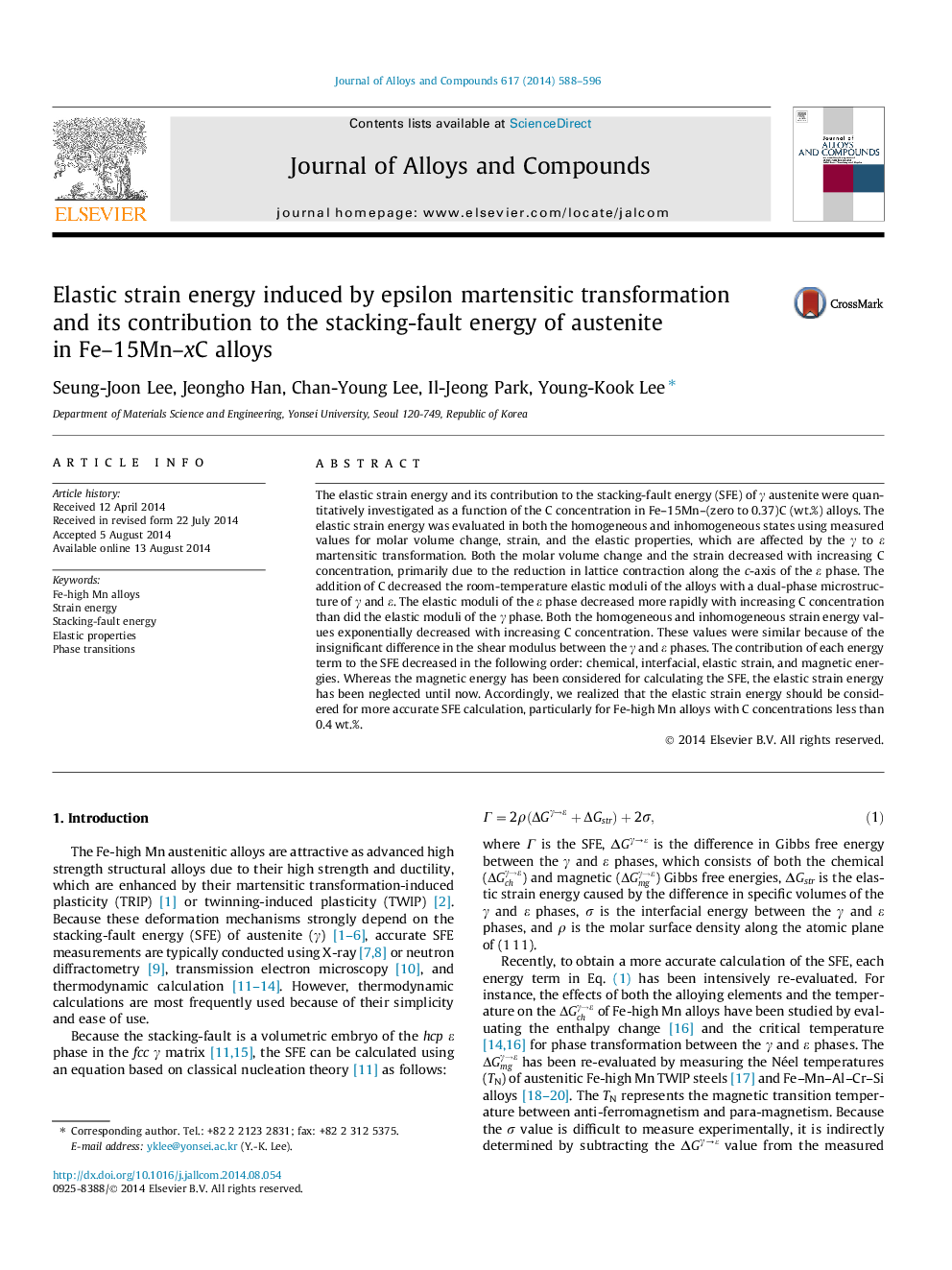| Article ID | Journal | Published Year | Pages | File Type |
|---|---|---|---|---|
| 8001038 | Journal of Alloys and Compounds | 2014 | 9 Pages |
Abstract
The elastic strain energy and its contribution to the stacking-fault energy (SFE) of γ austenite were quantitatively investigated as a function of the C concentration in Fe-15Mn-(zero to 0.37)C (wt.%) alloys. The elastic strain energy was evaluated in both the homogeneous and inhomogeneous states using measured values for molar volume change, strain, and the elastic properties, which are affected by the γ to ε martensitic transformation. Both the molar volume change and the strain decreased with increasing C concentration, primarily due to the reduction in lattice contraction along the c-axis of the ε phase. The addition of C decreased the room-temperature elastic moduli of the alloys with a dual-phase microstructure of γ and ε. The elastic moduli of the ε phase decreased more rapidly with increasing C concentration than did the elastic moduli of the γ phase. Both the homogeneous and inhomogeneous strain energy values exponentially decreased with increasing C concentration. These values were similar because of the insignificant difference in the shear modulus between the γ and ε phases. The contribution of each energy term to the SFE decreased in the following order: chemical, interfacial, elastic strain, and magnetic energies. Whereas the magnetic energy has been considered for calculating the SFE, the elastic strain energy has been neglected until now. Accordingly, we realized that the elastic strain energy should be considered for more accurate SFE calculation, particularly for Fe-high Mn alloys with C concentrations less than 0.4 wt.%.
Related Topics
Physical Sciences and Engineering
Materials Science
Metals and Alloys
Authors
Seung-Joon Lee, Jeongho Han, Chan-Young Lee, Il-Jeong Park, Young-Kook Lee,
